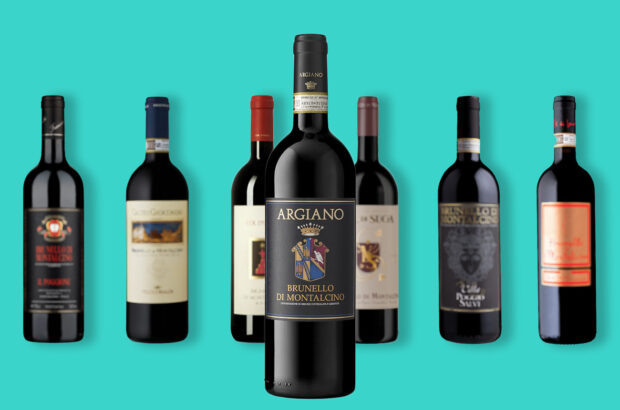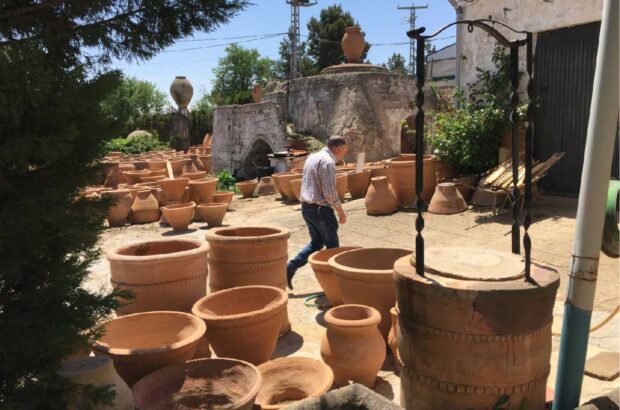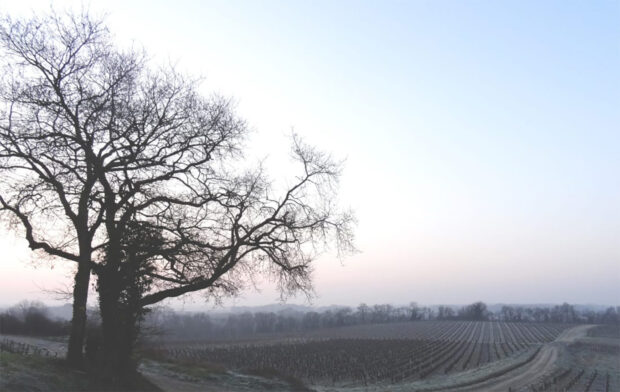- A rash of wannabe garagistes have been frantically climbing into their overalls to replicate the winning formula of their small but perfectly formed role models.
- ‘It’s almost impossible to keep up with what’s going on out there.’
- A bit of hype, a charismatic owner and a few 95+ scores from a well-known American wine critic and guess what? A star is born – with a price tag to match.
- ‘These wines have proven what can be achieved by people who care about quality.’
The Cult Bordeaux? Or not…
Remember cult Bordeaux? You know, the handful of micro-cuvées, or vins de garage emanating from unheard of, postage stamp properties in Saint-Emilion and Pomerol? Some of you may have to go back to the giddy days of 1997 when Le Pin, Valandraud, La Mondotte and Tertre-Rôteboeuf were going for silly money in the sale rooms at Christie’s and Sotheby’s. And then what happened? Asian economies crashed, the bottom fell out of the market and back in Bordeaux it all went deathly quiet. Meanwhile, quick as a flash, the vinous spotlight swiftly shifted its glare across to California’s latest catwalk creations.
Bordeaux wines
Except, in reality, it wasn’t quite like that. Prices are still relatively depressed for the likes of Le Pin and its cult compadres, but only against the ludicrously inflated figures of three years ago. In real terms, a case of La Mondotte still costs a couple of limbs and several vital organs (£2,200 for the 1998). More importantly, there’s no shortage of super-rich buyers willing to stump up the readies. Indeed, there never has been, ever since these micro-crus first came to fame.
Which is why a rash of wannabe, garagistes have been frantically climbing into their overalls to replicate the winning formula of their small but perfectly formed role models. So much so that Right Bank cult-ism is reaching dot.comic proportions, before the bubble burst, that is. ‘Every year, there are a stack of young pretenders banging on the door to be let in,’ says Johann Bjorklund of Cave Cru Classé. ‘It’s almost impossible to keep up with what’s going on out there.’
Consequently, a trickle at the beginning of 1990s had turned into a flood by the end of it – and it’s still going strong. According to Valandraud’s Jean-Luc Thunevin, one of the original gang of four garagistes, ‘a long list of newcomers have joined this exclusive cult club’. Naming names, Thunevin’s roll-call includes La Gomerie, Rol Valentin, L’Hermitage, Croix de Labrie, Gracia, Balestard, Le Dôme and Haut Condissas.
Not only that, Thunevin lists several more properties who are aspiring to join the top league. In this category he puts Saint Domingue, Sanctus, Lynsolence, Andreas, Pas de l’Ane, Peby Faugères, Petit Gravet and his own, controversial new estate in Margaux – Marojallia. No wonder they’re feeling a few shock waves on the other side of the Gironde.
As if this wasn’t bad enough for the Left Bank’s old order, Robert Parker has also been rubbing salt in the wounds. In his latest issue of the Wine Advocate, he writes that, ‘Saint-Emilion is Bordeaux’s most fashionable and hottest appellation. I fully expect the proliferation of garage wines to continue in Saint-Emilion and to spread to not only the prestige appellations, but also such satellite appellations as Puisseguin-Saint-Emilion, Montagne-Saint-Emilion, Côtes de Castillon, Fronsac, Canon-Fronsac, Côte de Blaye and Côte de Bourg,’ he says. Moreover, Parker himself also lists over 30 new properties that are not yet household names, but will be soon. It’s enough to make you choke on your cru classé claret.
The beginning
Of course, it all began with Le Pin whose first few vintages, dating from 1979, were almost universally ignored till the mid-to-late 1980s. At which point, its sheer quality was outed and the value of the wine rocketed into the stratosphere, never to return. On the way, it out-priced Pétrus and the premiers crus, reaching an auction record of £25,000 for a single case of the 1982. While in its slipstream followed the others – Valandraud, La Mondotte and Tertre-Rôteboeuf.
They were christened garagistes because the wines were made, not in grandiose châteaux, but in much more basic, elemental surroundings. Often these were literally garages or ouvriers’ huts, completely lacking in the usual space age technology. Equally, their tiny two or three hectare vineyards had no acclaimed terroir, history or track record to speak of. Yet, despite such humble origins, the economy of scale enabled these self-confessed wine fanatics to hand-craft micro-cuvées of the most extraordinary style and quality. To do this, they spared no expense, lavishing unprecedented care and attention on their wines in the vineyard and winery.
‘For instance, Valandraud only made great wine in 1992 because Jean-Luc Thunevin was able to pick his entire crop at the optimum moment in one afternoon flat,’ asserts Sotheby’s Serena Sutcliffe MW. Similarly, Rol Valentin’s vineyard workers spent an extra 1,000 hours in the vineyard last year to remove damaged grapes after a hailstorm. You can do this for a few hundred cases, but not for 20,000, an average production for a first growth. It costs too much.
You don’t need a degree in economics to realise that the laws of supply and demand work in favour of the small cult rather than the large cru, assuming the quality is up to scratch. Then throw in a bit of hype, a charismatic owner and a few 95+ scores from a well-known American wine critic and guess what? A star is born – with a price tag to match. No wonder then that anyone with a patch of dirt and a shed is scrambling to create the next Le Pin. Terroir? More like, where there’s muck there’s brass.
It’s no surprise that the owners of the latest would-be cults are not Bordeaux establishment figures. Some are locals trying their hand (and their luck), but others have bought their way in from the outside. They are either resurrecting under-performing châteaux or creating new properties. But not everyone is in it solely for the money. Someone like Gérard Perse, the supermarket magnate has plenty of it already, thank you very much. Although he probably has a lot less now, having ploughed millions of francs into a string of superlative, Saint-Emilion châteaux (Pavie, Pavie-Decesse, Monbousquet and La Clusière). Similarly, Eric Prissette, the former footballer at Lille has acquired the relatively new estate of Rol Valentin not far from Cheval Blanc.
However, unlike the hands-on garagistes such as Thunevin and Tertre-Rôtebeouf’s Francois Mitjavile, Perse and Prissette aren’t grubbying their fingernails making their wine. Instead, they have called in the consultants. So it comes as no surprise to see Michel Rolland’s car doing the rounds on the Right Bank. But he’s not the only one, as another superstar consultant has also emerged in the form of Stephane Derenoncourt. He is consulting at numerous properties including Rol Valentin and La Mondotte.
The different styles
The cults have a very distinct style all of their own which Rolland and co continue to perpetuate. It was first fashioned by Le Pin (some would say Pétrus) and then emulated by both the first and second wave micro-crus. Being the Right Bank, the predominant cépages are Merlot and Cabernet Franc with the result that one would expect softer, more approachable wines. Except that the cults go way beyond this benchmark norm. And this is one reason why they have engendered so much controversy.
It begins in the vineyard. The grapes are harvested at ultra-ripe levels often from ruthlessly low yields and are rigorously selected. Typically, they then receive lashings of new oak, emerging from barrel to bottle as heavily extracted, richly concentrated and flamboyantly opulent wines. As a result, many claret traditionalists decry these new creations. They argue that any terroir has been smothered in oak and that these rarity-value wines have been designed to score Parker points and appeal to the untutored palates of the mega-rich. Not only that, they just won’t last.
To which Jean-Luc Thunevin offers one of those insouciant Gallic shrugs. ‘Yes, these wines are polemical,’ he says unapologetically. ‘That is to say, they must not please everybody. Obviously, those who like acidic, thin, vegetal wines are not going to like these fat, rich, opulent wines which, paradoxically, are concentrated but easy to drink. Cult wines are not for intellectuals; they are for sensualists and gourmands.’
The different opinions…
For a slightly less subjective view, I spoke to Bibendum’s Simon Farr and Christopher Burr MW, ex-Christie’s and the recently appointed Chairman of the fine wine internet traders, uvine.com. Burr was worried about the alcohol and fruit dominance in some of them. ‘I don’t yet find them as gastronomically pleasurable as the first growths, Pétrus or Cheval Blanc. Nevertheless, the best of the bunch are serious wines which won’t be here today, gone tomorrow,’ he said.
On the question of ageing, Farr doubted whether many of the wines would collect their pensions. However, he preferred to reserve judgement at this early stage. ‘Firstly, it’s unfair to generalise and secondly we don’t need to know how they will develop right now. Let’s wait and see,’ he counselled.
Interestingly, Farr’s main concerns were the net effect all this cult success might have on the other side of the Gironde. ‘What worries me in particular is that this new, “manipulated” style sits uncomfortably with the traditional values of terroir and authenticity.’ And then there’s price. ‘Remember that Bordeaux is a very market-led place and the first growths like to be top of the pile. So they naturally resent it when they see these arriviste cults are commanding such high prices. In which case, there is a real danger is that the old guard might be led by the nose on this in an attempt to play catch-up.’
Serena Sutcliffe also has little doubt that the Bordeaux establishment is envious of the attention being given to the garagistes but she doesn’t think the two are in competition. ‘Due to the scale of their production, they cover the world market in different ways. Similarly, I don’t think it would be wise for the first growths to follow suit by trying to asset strip tiny parcels of their very best vines as this would take away credibility from their grand vins.’ Yet, the cults have already had some influence. ‘The first growths have certainly improved quality with much tighter selections.’
Meanwhile, there’s another reason, much closer to home, which is preventing the left bank from ignoring the rise of the cults. The great divide with Valandraud setting up the first garage operation in Margaux, much to the annoyance of its neighbours. Marojallia’s 1999 début release, made by Murielle Andraud (Jean-Luc’s wife) amounts to no more than 600 cases, but is already causing quite a stir. Most recently, the wine has been rated 89–91 points by Parker – an excellent but, but by no means outstanding score.
However the key issue is the release price and Bordeaux is waiting, with bated breath to see what it will be on the open market. Paul Pontallier though, winemaker at Château Margaux, remains calmly phlegmatic. ‘We are not worried at all’ he said recently. ‘We know that very limited quantities of wine designed to get interest from tasters can get very high prices, but it is a specific phenomenon and it would be crazy to change our prices because of it,’ he added.
Stephen Browett at Farr Vintners is more concerned about Parker’s apparent power to influence the fine wine market. He asserts that, ‘there’s no doubt that these formulaic, cult/garage wines wouldn’t exist without Parker. Effectively, he is making a market by scoring wines with no terroir or track record over and above the likes of Cheval Blanc. That’s not to say they’re not good. I just don’t think they are that good.’
Robert Parker’s response to assertions like this is equally forthright. ‘I disagree with those who argue in favour of the status quo (claiming that garage wines have a destabilising impact on the marketplace). Because many (to date) possess exciting levels of quality, these wines have proven what can be achieved by people who care about quality. The beneficiaries, of course, are consumers who drink fine wine. Yet caution is advised. There will be increasing numbers of garage wine “wannabes” and not all of them will justify their luxury prices and chic images.’ You have been warned.












